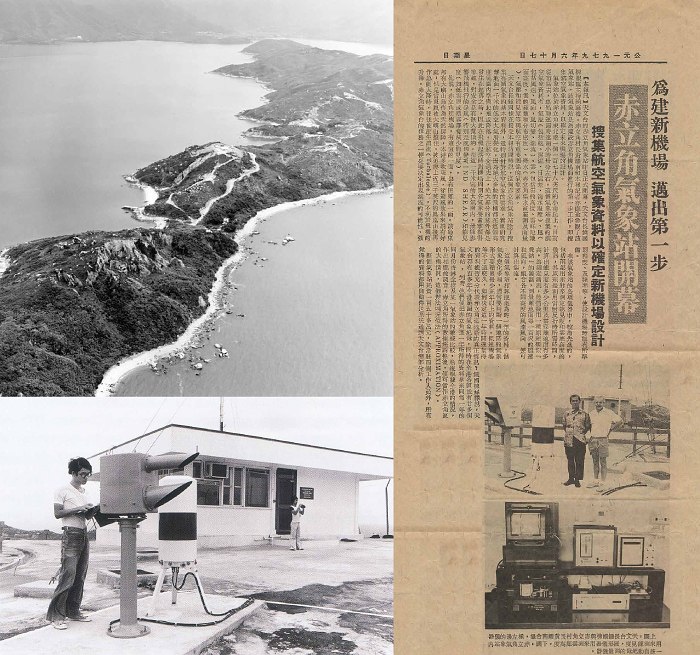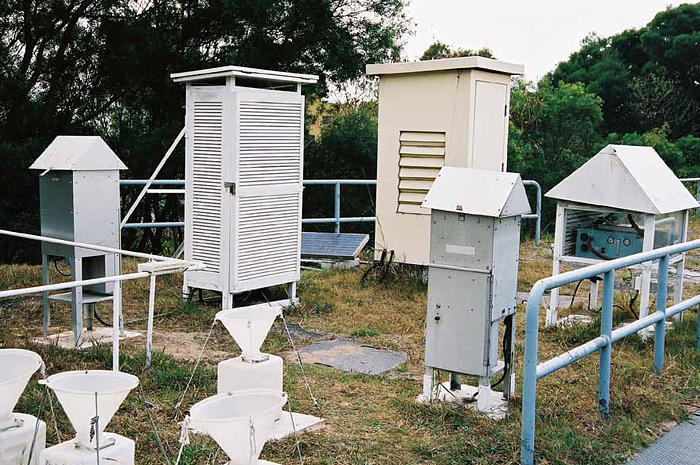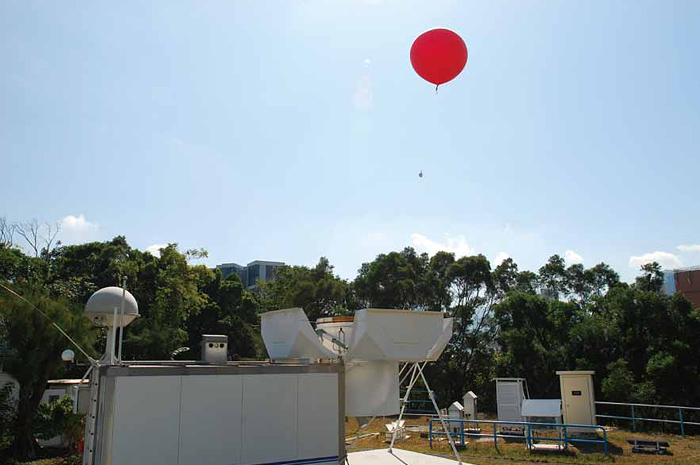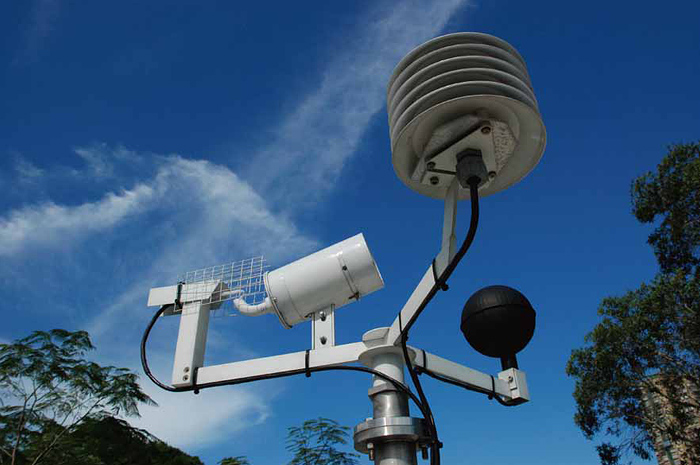HKO - Under the Same Sky 130 Years - Display Area 10
Display Area 10 : Post-war Regeneration - Entering into a New Era
Introduction of Display Area
Soon after the Hong Kong Government started planning feasibility studies regarding the construction of a new airport at Chek Lap Kok in the mid-1970s, the Observatory set up a temporary meteorological station as early as 1979 staffed with observers to collect weather data.
The Observatory installed its st computer system in 1973. Coupled with advances in observing and forecasting techniques and the monitoring network, the capability of the forecasters to predict weather changes was greatly enhanced. The range of the Observatory's forecasting service has been extended from 24 hours to a range of seven days.
In response to the construction of the nuclear power plant at Daya Bay in Shenzhen in the 1980s, the Observatory extended its radiation monitoring work to cover air, water, soil and food samples, and implemented the Environmental Radiation Monitoring Programme in 1987.
In 1979, the Observatory set up a temporary meteorological station at Chek Lap Kok as part of a feasibility study for the new airport. These photographs show the original landscape of Chek Lap Kok Island; staff making weather observations at the site; and news coverage of the time.

As an important component of the Environmental Radiation Monitoring Programme in response to the establishment of the Daya Bay nuclear power plant, the Observatory's radiation monitoring network consists of 12 ed radiation monitoring stations. This photograph shows the Radiation Monitoring Station at King's Park in 2002.

The Observatory installed an automatic upper-air sounding system in 2004, the st of its kind in Southeast Asia, to replace human operation for enhancing safety and efficiency.

In 2008, the Observatory developed its st in-house built real-time "Heat Stress Monitoring System" for the Olympic and Paralympic Equestrian Events in Hong Kong. The system was the st patented scienti invention made by the Observatory.
